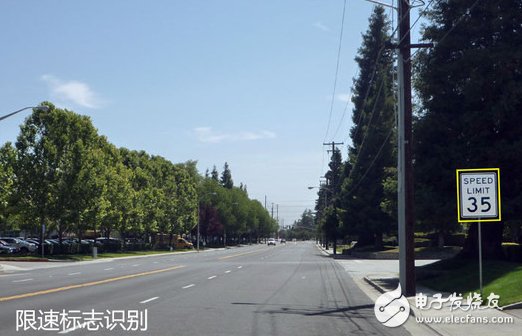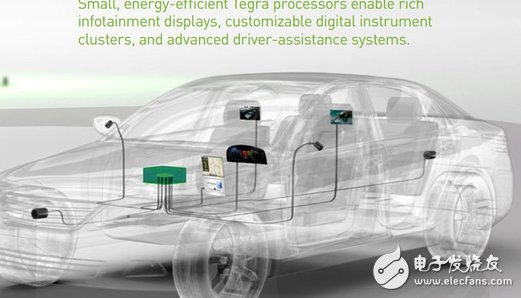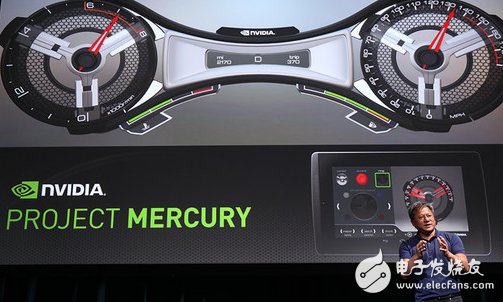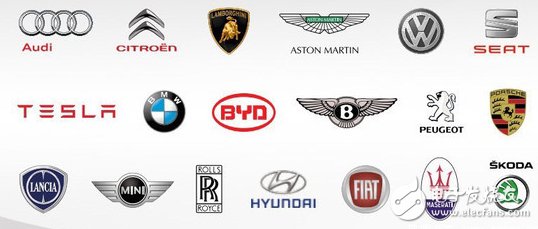With the increasing intelligence of automobiles, more and more users are not satisfied with the boring life of listening to music in the car, navigating the home route or making a hands-free phone. What they need is a set. Integrated multimedia system: To have a scientific and technological interactive interface, to be able to intelligently plan the driving route, and even to become another mobile office terminal... To achieve this, of course, the car also needs to install a stronger graphics processing chip. Just like our computer and mobile phone.
Tegra K1: NVIDIA calls it the most advanced mobile processor in the universe
Based on the demand for more powerful GPUs in the automotive market, NVIDIA, a leading visual computing technology company, has launched the new graphics processor Tegra K1 for automotive applications, and at the 2014 CES (International Consumer Electronics Show) Officially exhibited. Correspondingly, they also developed a special version of the "Tegra K1 VCM" (visual computing module using Tegra K1 processor) for the migration to the car, and provided it to automotive OEMs and Tier 1 suppliers. The Tegra K1 VCM chip can be The vehicle provides a complete computer system capable of running multiple operating systems including QNX, Android, Linux or Windows, and is widely used in automotive security and multimedia entertainment systems. Compared with the previous processing chip, Tegra K1 has stronger performance. In the advanced driver assistance system (ADAS) sensing system based on radar camera, it can realize functions including pedestrian detection, traffic identification, lane recognition, etc. Collision Prevention (PCS), Lane Offset Warning (LDW), and Active Cruise Control (ACC) systems.
In terms of structure, the Tegra K1 chip will be based on Nvidia's Kepler architecture, with a huge number of 192 cores (stream processors), four CPU cores and a power-saving core, and finally packaged in a small module. For both 32-bit and 64-bit versions, it is clear that Nvidia is very confident in their new products and boldly claims that the Tegra K1 chip is the most advanced mobile processor in the universe.
Where is the revolution of the Tegra K1 VCM chip?
Of course, in terms of new electronic technologies, our foothold will be in the automotive application itself. In fact, the application of state-of-the-art graphics processing technology to the automotive field, the Tegra K1 VCM chip itself is revolutionary, and it also makes the car driver assistance system independent upgrade, virtual instrumentation and cross-platform compatibility become a reality.
Driving safety assistance system can also be easily upgraded



It is not new to see the driver assistance system on some medium and high-end models. For example, we are familiar with parking assistance and blind spot detection systems. Although the names are different, the basic working principle is similar and often used. Dedicated, closed hardware operation. This has led to some problems: for example, complex and sophisticated structures are very demanding for maintenance and post-upgrades. At the same time, the “everything is the master†mode of work also adds unnecessary energy loss. But the Tegra K1 VCM chip provides an open, scalable platform that is undoubtedly innovative.

For example: car manufacturers have introduced a new feature, but it is also based on existing hardware: camera, body electronic stability system, graphics chip, etc., and my models are equipped, then only need to pay relatively low upgrade costs You can use these new features without having to buy a new car. Just as we update the application client on the computer or mobile phone. For the manufacturer, this undoubtedly increases the satisfaction of the user to purchase the high-end model; for the user, this obviously improves the vehicle life cycle.
Make custom intelligent instruments possible

With the display content of the vehicle dashboard being more and more, the inherent mechanized dial is no longer competent, and the digital virtual dashboards with more technical and practicality are beginning to be assembled on more medium and high-end models, but they are dissatisfied. Yes: Problems such as display delay, operational delay, and single effect are still widespread.
With the new Tegra K1 VCM chip, these phases will be greatly improved. In addition to faster computing speed, its powerful 3D graphics rendering effect allows the display interface to simulate the reflection and refraction of actual material light. NVIDIA calls it a material. Definition Language (MDL). For example, digital instrument clusters and infotainment systems can be customized with a wide variety of virtual materials. From copper, titanium and surface-brushed aluminum to stitched leather and carbon fiber, these materials come in a wide variety of materials. At the same time, the driver can also choose the favorite instrument style and display mode, just as we can update the image of the characters in the computer game.
Support multiple operating systems and low power consumption


As mentioned earlier, the Tegra K1 processor will still be available to automotive OEMs and Tier 1 suppliers in the form of VCM (Visual Computing Module). In fact, the VCM chip is not the first product of NVIDIA to enter the automotive field. The four-generation Tegra series chips that were introduced earlier have been widely used in production cars, and the number has exceeded 4.5 million. For example, we are familiar with BMW, Volkswagen, Peugeot Citroen and BYD. Accordingly, with the Tegra K1 processor, the new visual computing module provides a more complete computer system capable of running a variety of operating systems including QNX, Android, Linux or Windows. The immediate benefit of this is that the car's R&D process is greatly optimized, while also bridging the gap between the speed of innovation in the consumer electronics sector and the often long development cycle in the automotive industry. More importantly, the energy consumption of the new processor will be greatly reduced. With the official introduction of NVIDIA, the performance of the Tegra K1 can be increased by 40% under the same power consumption, and the power consumption of the Tegra K1 can be saved at the same frequency. 55%.
FGI`s FGSVG series Static Synchronous Compensator (STATCOM) can enhance power transmission capacity, reduce power loss, compensate reactive power, control harmonics, suppress flicker, stabilize grid voltage, balance three-phase system, change system damping characteristics and improve system stability. FGI`s STATCOM series products can be widely used in petrochemical, power systems, metallurgy, electrified railways, urban construction and other industries.
Static Synchronous Compensator
Static Synchronous Compensator,Abb Static Var Compensator,Static Series Compensator,Static Series Compensator,Statcom Project,Statcom ABB
FGI SCIENCE AND TECHNOLOGY CO., LTD , https://www.fgi-tech.com